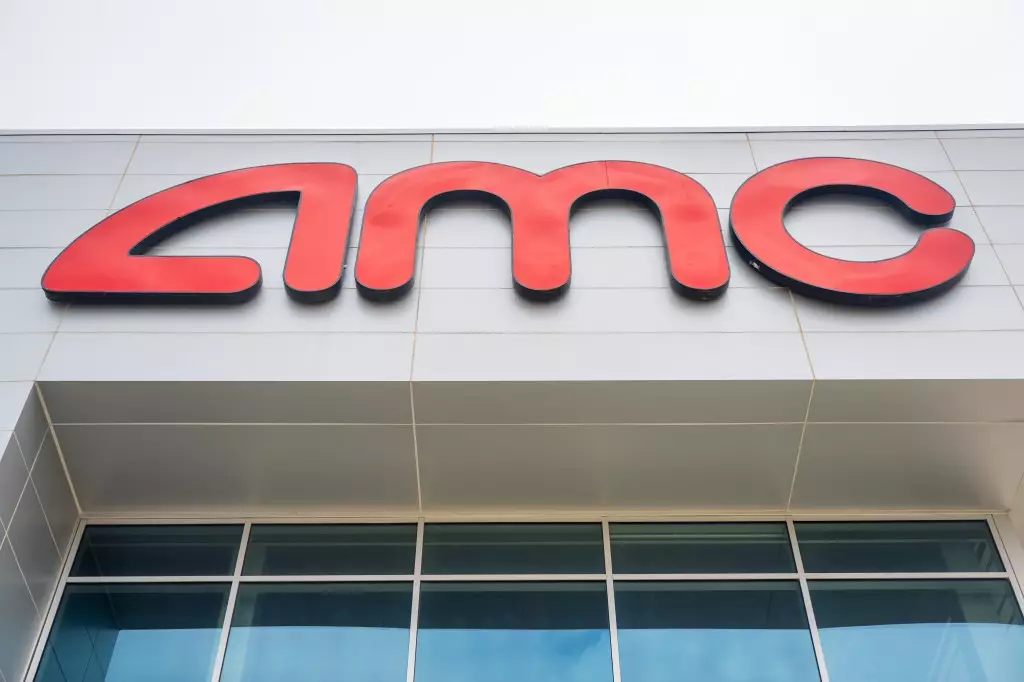AMC Entertainment’s recent earnings report has sent shockwaves through the industry, revealing both a significant net loss and an alarming drop in revenue. Many observers are quick to confirm the narrative that the excitement for cinematic experiences is waning, but I believe that this interpretation is oversimplified and misleading. The broader economic dynamics at play cannot be underestimated, nor can the behavioral changes of consumers following the pandemic. While it’s easy to attribute a simplified conclusion to the company’s underperformance, a deeper analysis shows a critical inflection point for the theatrical experience that could redefine its future.
AMC’s report highlighted a net loss of $202 million, a startling decline compared to $163 million from the previous quarter. Revenue also slipped to $862 million, down from $951 million, suggesting that audiences have been more selective in their film choices. Such reports fuel speculation about the perceived decline of cinema as a favored entertainment medium. Yet AMC’s CEO, Adam Aron, has posited that this dip is an outlier, a mere “distorting anomaly.” Whether history will vindicate or condemn Mr. Aron’s optimistic outlook remains to be seen.
In Defense of Movie Theaters: An Underappreciated Renaissance
What often gets overlooked in such discussions is the resiliency of moviegoing culture itself. While Q1 stats show the lowest box office revenue since 1996, it would be a mistake to dismiss the future viability of theaters outright. Aron’s point about the subsequent revival in April, where box office receipts doubled compared to the previous year, suggests that there is still a remarkable demand waiting to be tapped. This resurgence might only need the right mix of high-quality content—a possibility that the upcoming releases, from Disney’s “Lilo & Stitch” to Universal’s “Jurassic World Rebirth,” could catalyze.
If we scrutinize the motivations behind cinematic attendance, a confluence of factors emerges. Moviegoing is an event that transcends mere viewing; it is a communal experience, a form of escapism that strikes a chord in our collective psyche. This dimension can’t be gauged simply through quarterly financials or viewing habits. Recent cultural events, affording audiences new ways to engage with stories—albeit sometimes on-screen at home—have created a shift but not a dissolution of the desire for shared cinematic escapades.
Financial Realities: The Fragility of AMC’s Position
However, it is crucial not to gloss over the challenging financial landscape that AMC faces. The company’s operating cash outflows—$370 million this quarter compared to $188 million last year—underscore the precarious nature of its operations. While the management is holding onto hope for future gains, it’s evident that the company is walking a tightrope. Strategies like AMC Stubs loyalty programs and premium offerings have garnered some traction, yet are these measures sufficient to keep AMC afloat amid declining audience numbers?
Investors hoping for significant yields from AMC’s once-heralded meme stock may be disillusioned as share value stagnates around $2.70. The appeal of theater experiences could dwindle further if financial stability remains elusive. As much as Aron might rally around the potential for a box office rebound, the reality is that the tectonic plates of entertainment consumption are shifting.
A Cautionary Note: Nostalgia and Innovation
As theaters strive for revival, there lies a fundamental risk in over-relying on nostalgia. Just because a beloved movie franchise is being remade or revived doesn’t guarantee audience lift. Thus, there must be a concerted effort to innovate—not just in the films themselves but in examining the theater-going experience. With streaming services steadily enticing audiences with convenience and price advantages, theaters must elevate the experience to one that cannot be replicated at home, be it through sumptuous seating, enhanced sound systems, or distinctive dining options. The cinematic experience must become an event that consumers feel they cannot afford to miss.
The fate of AMC and theaters at large likely hangs on their ability to seize strategic opportunities that align with shifting consumer behaviors, coupled with a commitment to nurturing the unique charm of movies. The current era presents significant obstacles, but it also offers avenues for transformative change. The important lesson from AMC’s latest quarter is that the theater industry is at an inflection point—one where concerted innovation and adaptability might just be the keys to survival.

